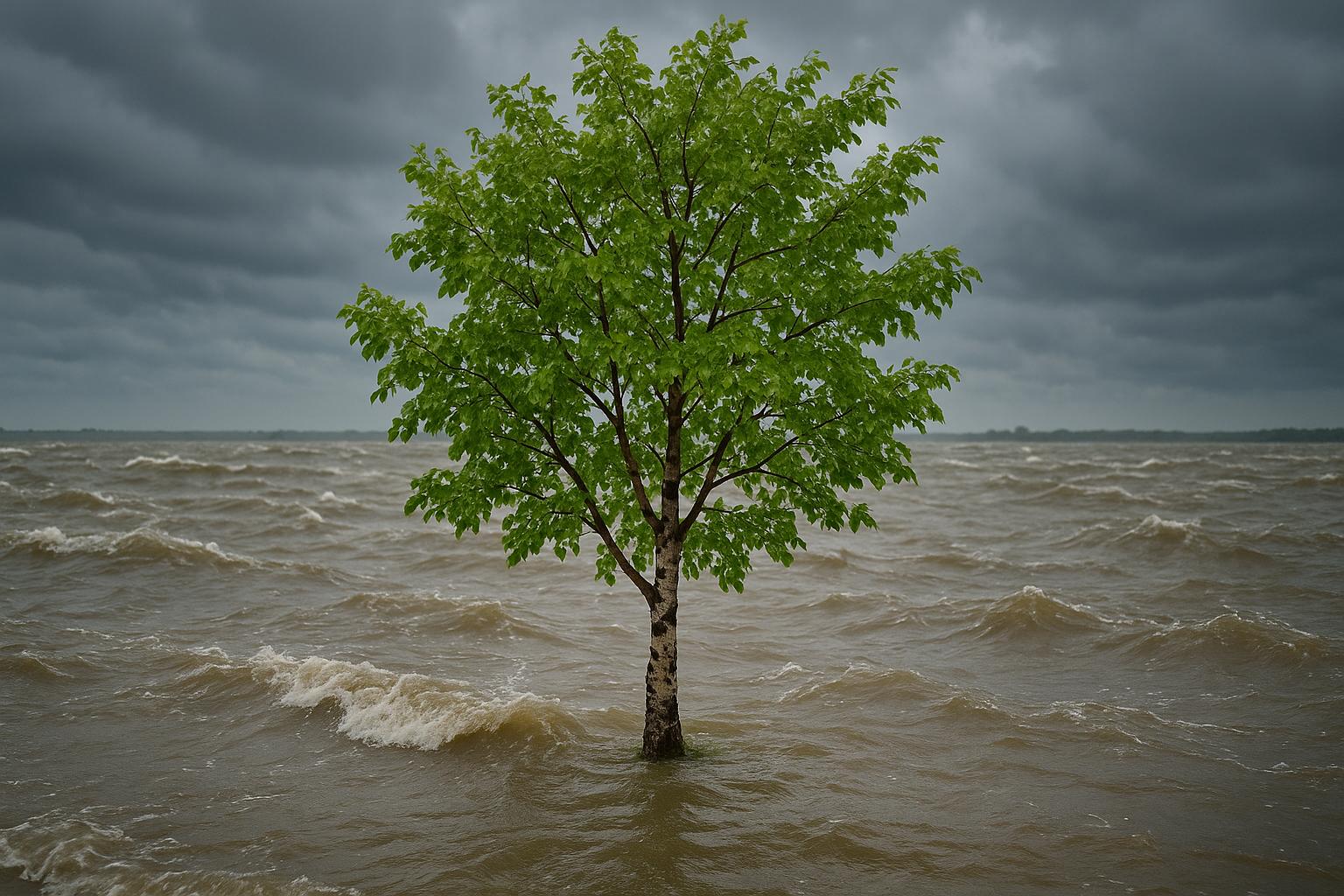Homeowners in the UK are being encouraged to cultivate gardens specifically designed to withstand and recover from the increasing threat of flooding brought on by climate change. The Department for Environment, Food and Rural Affairs (Defra) has identified five key types of plants—including trees, shrubs, grasses, and flowers—that can enhance a garden’s resilience to heavy rainfall and waterlogging.
Defra highlights species such as the river birch (Betula nigra), valued for its rapid growth and shallow root system that helps stabilise the soil and absorb water efficiently. The dogwood shrub (Cornus sericea), with its characteristic red stems and fibrous roots, is also recommended for its ability to reduce soil erosion. Other plants on the list include mace sedge (Carex grayi), which slows water flow with its dense tufts, yellow flag iris (Iris pseudacorus), known for stabilising wet soils and bright blooms, and red bistort (Bistorta amplexicaulis), a pollinator-friendly groundcover suited to damp areas.
These flood-resilient plants work as natural “sponges,” absorbing excess water through roots and leaves, thereby slowing runoff and facilitating better soil drainage. Defra stresses that planting such species should complement other flood preparations, including checking local flood risks, signing up for warnings, and devising flood response plans. Flood Minister Emma Hardy underlined the practical benefits of gardening for flood resilience, urging residents to “dust off your spades” and prepare their gardens to better withstand winter downpours.
This push comes amid warnings from the Climate Change Committee that the UK is ill-prepared for the escalating frequency and severity of extreme weather events exacerbated by global warming. Gardens represent a vital frontline in mitigating flood damage as urban areas become increasingly vulnerable.
Additional insights from the Royal Horticultural Society, presented at the 2024 Chelsea Flower Show, further expand on plant options that combine aesthetic appeal with flood resilience. Their showcase featured quince trees, with robust root systems ideal for wet soils; resilient pollarded willows; adaptable Ranunculaceae species suited for damp conditions; and ground-covering annuals and biennials that support pollinators while quickly stabilising soil. These choices exemplify how garden design can thoughtfully balance beauty and function in flood-prone settings.
The London Fire Brigade also advocates for particular trees and shrubs in flood management strategies, citing species such as yew, cotoneaster, and western red cedar for their dense canopies, which store rainfall. Certain flowering shrubs like forsythia, hawthorn, and privet contribute by evaporating significant amounts of water, reducing runoff and the risk of flooding.
Private sector actors, including insurer Aviva, echo this focus on flood-resilient gardening. Their British Rainforest Garden concept highlights biodiversity alongside flood prevention, featuring native and shade-tolerant species like silver birch, maidenhair spleenwort fern, and cow parsley, which thrive in wet or shaded areas while supporting wildlife and ecosystem health.
Flood Re, an organisation specialising in flood risk awareness, lists further valuable plants such as water mints, astilbe, and male fern. These species not only manage moisture but also provide habitats for pollinators and wildlife, enhancing garden ecology in flood-affected zones.
Moreover, experts emphasise planting dense shrubs like hawthorn and holly as natural windbreaks, deep-rooted perennials to prevent soil erosion, and low-growing groundcovers like creeping thyme that maintain soil structure and enable better water drainage. Proper placement and combination of these plants create gardens that offer year-round protection against flooding and storm damage.
The Flood Resilient Garden project by Flood Re demonstrates practical applications of these principles, featuring diverse plant zones from sunny banks to boggy areas, integrating species such as hydrangeas, salvia, lilies, and various grasses. This approach shows how ecological landscaping can both reduce flood risks and deliver aesthetic value.
As flooding risks rise in tandem with climate change, these multiple expert-backed strategies underline the role of gardening as a cost-effective, environmentally beneficial way for homeowners to mitigate flood damage and support broader resilience efforts.
📌 Reference Map:
- Paragraph 1 – [1]
- Paragraph 2 – [1]
- Paragraph 3 – [1], [2]
- Paragraph 4 – [2]
- Paragraph 5 – [3]
- Paragraph 6 – [4]
- Paragraph 7 – [5]
- Paragraph 8 – [6]
- Paragraph 9 – [7]
Source: Noah Wire Services
